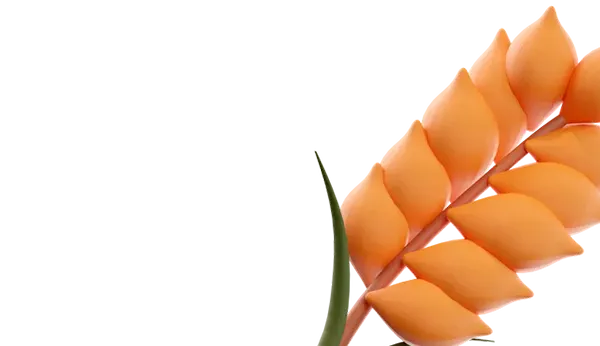During the last few months, there has been a decrease in corn and soybean prices, raising questions about their long-term price formation. Current trends point to a period from 2021 to 2023 when prices were higher, and now we can expect a return to lower price levels. These trends evoke memories of the past, suggesting the possibility of a prolonged period of income decline. Within the agricultural framework of the corn belt region, prudent management of financial resources is advisable.
Price Projections for Corn and Soybeans in 2024 and 2025
In the June report of the World Supply and Demand Estimates (WASDE), the U.S. Department of Agriculture (USDA) forecasts that the price of corn in 2024 will be $4.40 per bushel. This is the average price for the marketing year from September 2024 to August 2025. This price is lower than the previous price of $4.75 per bushel in 2023 and significantly below the recent peak of $6.54 per bushel in the 2022 marketing year (see Figure 1). The projected price for 2025 is currently unknown, but futures markets indicate a slight further decrease to $4.25 per bushel.
Similarly, soybean prices have also decreased from previous highs in 2022. The average soybean price was $14.20 per bushel in 2022, decreasing to $12.55 in 2023, with a forecast for 2024 at $11.20 per bushel. Futures markets suggest the price in 2025 will be $11.00 per bushel.
The highs in 2022 gave hope for new higher price levels for corn and soybeans. However, current prices and forecasts indicate further declines. A reasonable model suggests that high prices were temporary and related to short-term supply and demand factors, such as the recovery of the swine herd in China in 2020, the conflict between Ukraine and Russia disrupting supplies, and irregular crop yields in Brazil, Argentina, and the U.S. in recent years.
Commodity prices typically revert to long-term levels, fluctuating around them for extended periods, with changes only during prolonged market disruptions. From 1974 to 2006, average prices for corn and soybeans were $2.38 and $5.98 per bushel, respectively. There were periods when prices were significantly higher than these long-term averages. For example, in 1974, 1980, 1983, and 1995, corn prices exceeded $3.00 per bushel. However, after each of these higher price levels, they decreased again and remained below the $2.38 plateau.
In the mid-2000s, corn and soybean prices reached a new higher plateau. Starting from 2006, the average corn price increased from $2.38 to $4.55 per bushel, and the average soybean price increased from $5.98 to $11.00 per bushel. This price increase was driven by the increased use of corn for ethanol production and sustained growth in soybean export demand.
Since 2006, there were two periods when corn and soybean prices exceeded the $4.55 and $11.00 plateau levels, respectively. In 2012, corn and soybean prices reached $6.89 and $14.40 per bushel, respectively. This was due to worldwide supply deficits leading up to 2012 and a drought that resulted in low corn supplies and price increases. The most recent period of higher prices was from 2021 to 2023.
Between periods of high commodity prices, there may be a lengthy period with lower prices below long-term average values. For example, from 1985 to 1992, corn prices were below the $2.38 plateau per bushel, and soybean prices were below the $5.98 plateau per bushel, except in 1988 when a drought raised them. From 1998 to 2005, prices also remained below the plateau, except in 2003. From 2014 to 2020, corn prices dropped below $4.55 per bushel, and soybean prices remained below $11.00 per bushel.
The high prices observed in 2021 and 2023 are likely due to short-term factors rather than fundamental changes in supply and demand. Therefore, we can expect a period of lower prices, possibly with minor adjustments to the $4.55 corn and $11.00 soybean plateaus. The duration of this period is unpredictable, as are the factors that drive price increases. The period may end if U.S. crop yields are below average in 2024. However, the likelihood of such an event seems to diminish as the growing season progresses. Other factors, such as changes in the conflict between Ukraine and Russia, may push prices up in 2024. However, history also shows that a period of lower prices can last for seven or eight years.
Returns and Management Decisions
Lower prices will lead to a period of lower returns and profitability for farm operations, with cost adjustments usually lagging behind prices. In this regard, the upcoming crop years may resemble the period from 2014 to 2020, the most recent period of lower prices and returns. This period was characterized by:
- Decreased profitability. Figure 2 shows operational and farmland returns from 2000 to 2024 in Central Illinois. Operator and farmland returns reflect returns for both the farmer and agricultural land. Since 2012, operator and farmland returns have decreased after high prices, reaching a lower level from 2014 to 2019. This led to a decrease in net income for grain farms in Illinois, almost equating net income to zero in 2015.
- Slight reduction in resource costs. Some reduction in costs for certain resources, especially fertilizers and fuel, is expected (farmdoc daily, June 18, 2024). Stability is expected for other resources, such as seeds and pesticides.
- Increased pressure on rental payments. From 2014 to 2019, operator and farmland returns approached or fell below cash rental rates, leading to stabilization and a slight decrease in rental rates.
- Deterioration of financial position. From 2014 to 2019, the average debt-to-asset ratio increased, while the current ratio decreased. It is likely that in 2024, the financial position will weaken and only improve with rising prices.















